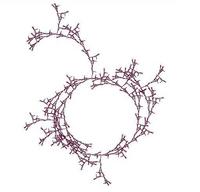Notes: Wednesday 9 April 2003
| Schedule |
- Today: sign up for Design Reviews
- Friday, 11 April, 11:00 am: Christopher Frost and Michael Peck, Pancakes, Puzzles and Polynomials: Cracking the Cracker Barrel Game. UVa Research and Design Symposium, Jefferson Hall (note location change).
- Friday, 18 April: Exam 2 out
- Wednesday, 23 April: Exam 2 Due
- 28 April (9am): Problem Set 8 Due
- If your project is successful, what will your site do on April 28?
- If your project is successful, what will your site be like in April 2005?
- How will you divide the work amongst your team?
- How will you manage your team?
- What is the hardest technical problem you have to solve to make your project successful?
- What ideas do you have for solving that problem?
What do we need to model computation?
FSM ::= <Alphabet, States, InitialState, HaltingStates, TransitionRules>
Alphabet ::= { Symbol* }
A set of symbols for the input.
States ::= { StateName* }
InitialState ::= StateName
Must be one of the states in States.
HaltingStates ::= { StateName* }
Must all be states in States.
TransitionRules ::= { TransitionRule* }
TransitionRule ::= < StateName, Symbol, StateName>
StateName X Symbol → StateName

TM ::= <Alphabet, Tape, TFSM>
Alphabet ::= { Symbol*}
A set of symbols for the tape.
Tape ::= < LeftSide, OneSquare, RightSide >
OneSquare ::= Symbol | #
LeftSide ::= [ Squares* ]
Everything to left of LeftSide is #. RightSide ::= [ Squares* ]
Everything to right of RightSide is #. Squares ::= OneSquare, Squares
Squares ::=TFSM ::= <States, InitialState, HaltingStates, TransitionRules>
Like a FSM, except the transition rules write to the tape and move the tape head.States ::= { StateName* }
InitialState ::= StateName Must be one of the states in States.
HaltingStates ::= { StateName* } Must all be states in States.
TransitionRules ::= { TransitionRule* }
TransitionRule ::= < StateName, OneSquare, StateName, OneSquare, Direction>
StateName X OneSquare → StateName X OneSquare X Direction
Universal Turing Machine
A Turing Machine that can simulate any other Turing Machine on an input: TMU (P, I) = the output of running TM-P on input I
- Alan Turing site by Andrew Hodges, author of Alan Turing: the Enigma (Douglas Hofstadter wrote the preface)
- Manchester Illuminated Universal Turing Machine (Turing Machine Art)
- HTML is not a univeral language, but XSLT style sheets are: universal turing machine implemented using XSLT
- Universal Turing Machine print (title slide picture)
- Turing Machines (animations)
